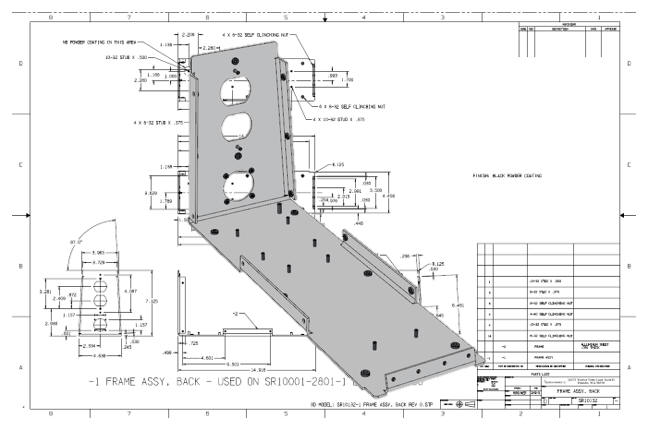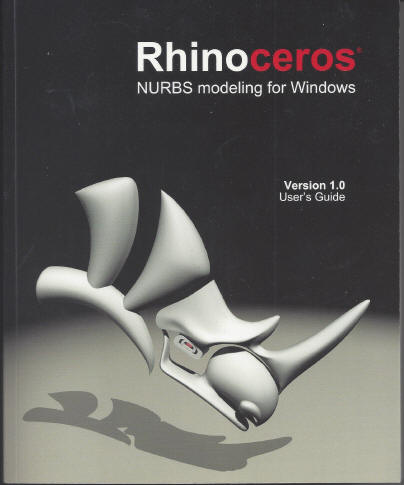 |
I was talking to a ZW3D enthusiast and past Rhino
user. He was telling me that ZW3D just offers more than Rhino and it
would be a good replacement. I said let’s offer Rhino users a special to
add ZW3D to their arsenal. I asked what Rhino’s weaknesses were!
He sort of hummed and hawed and really never gave
me an answer.
He said we could not replace those that use Rhino
for graphic arts.
So, I asked about mechanical design?
He said that the model was not associative and mostly focused on surfacing, has Boolean solid modeling and very weak documentation and would benefit from a good professional mechanical engineering package.
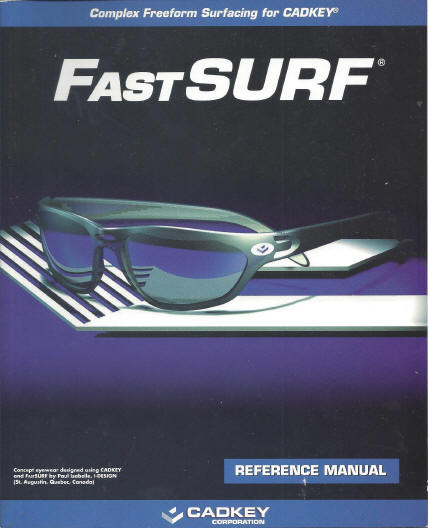
I was well aware of the surfacing of Rhino.
I was a dealer back in the early 1990’s.
I did take a 5 day class in Rhino. I was already
put off by the AutoCADish format. They taught us how to make a duck. The
class was full of mechanical designers and we were perplexed. We were
looking for precision mechanical surfacing. I was already a CADKEY
dealer and we had a very good mechanical surfacing package called,
Fastsurf. We dropped Rhino after that class.
I have pondered on this class and have come to the conclusion that precision surfacing is a bit boring and tedious. It is much more fun to pull surfaces into to cool organic shapes. Surfacing in the industrial mechanical design industry is a profession. You only have to look to advanced surfacing packages like Alias and Catia ICEM to see the level of experience required. Precision surfacing is basically the same no matter what program you use, from the intermediate that is supplied in many of the solid modeling packages to the high end $20,000 Alias. It is the focus of the precision surface design that defines the product to use. An effective package is easy to use 2D/3D wireframe and surfacing.
Rhino was the only viable Autocad 3D solution for the next 7 years!
Alias and Catia ICEM are probably an over kill for most precision surface design. Rhino and ZW3D will usually fill the bill. But ZW3D offers much more since it is a hybrid modeler with surfacing integrate with the solid modeling.
The 1990's -
3D CAD/CAM Moves to the PC!!
I was not happy with the input I got about Rhino
and decided to talk to a few ex and current Rhino users.
I found the current users were a tight knit group
which faithfully used the product, many for over 20 years. I found they
were very happy except with a few functions that it lacked. Many already
had a mechanical engineering package. The ex-users were happy with their
new-found level of Hybrid Modeling in ZW3D.
How does it play with other 3D CAD
programs.
A few programs read Rhino files directly which shows, not only the popularity, but its effective use.
The best way to export to Rhino is IGES. It was born with IGES as was all wire frame and surface translation in the beginning. ZW3D is also very good with IGES being a hybrid modeler from the very beginning.
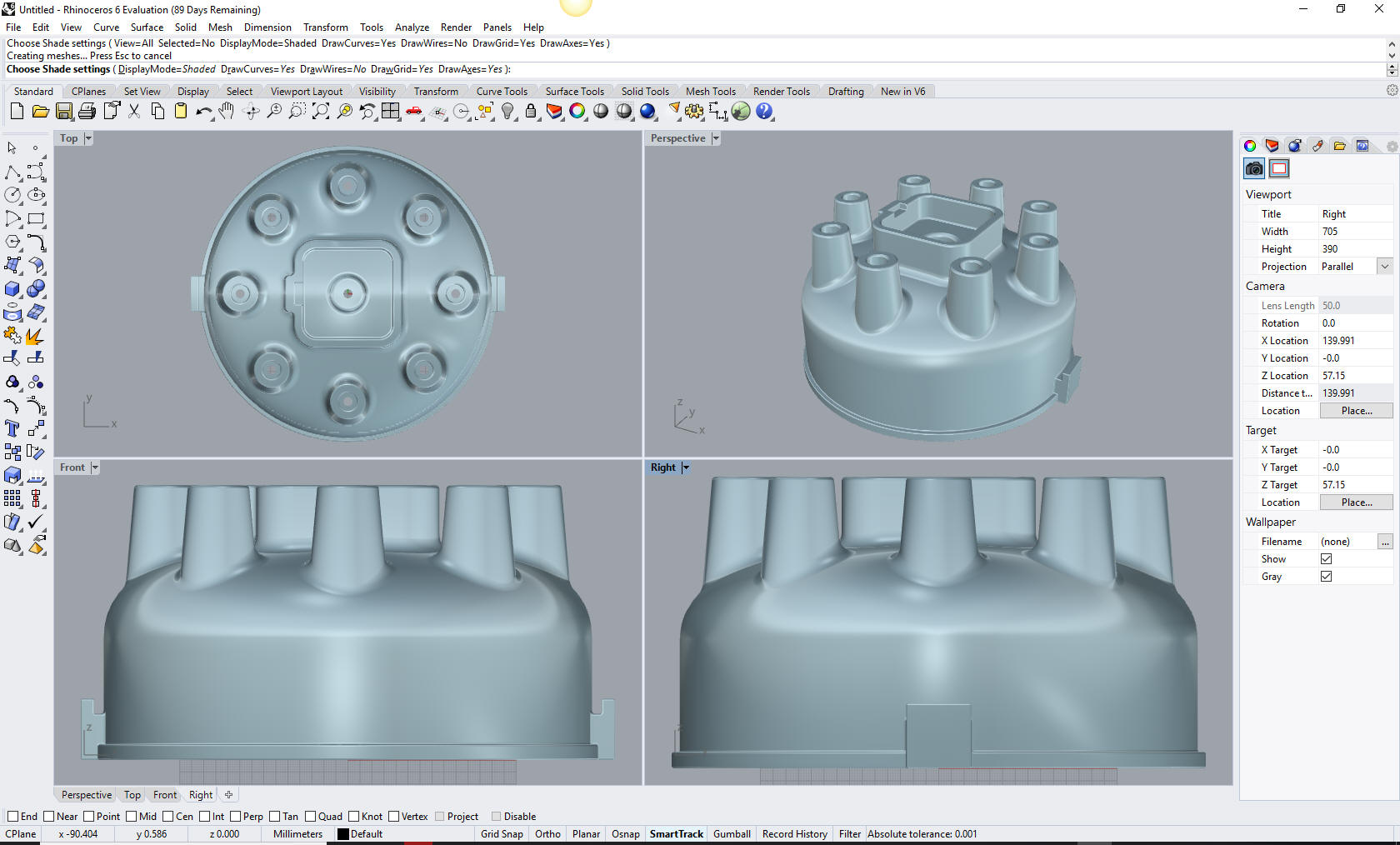
I have never understood the 4 views. It was so confusing in the beginning, but again logical, McNeel's audience was the Autocad user. It is a good first presentation of 3D. Autodesk actually offered no viable 3D option until Inventor. I do have a great Autocad story in this article toward the bottom. Autocad Mechanical 2012 does supply effective surfacing and push/pull solids.
The Worst to Best 3D CAD System and Why
Rhino was the Autocad world's first functional 3D system. Remember there were no PC base solids until 1995.
This more like 3D CAD today!
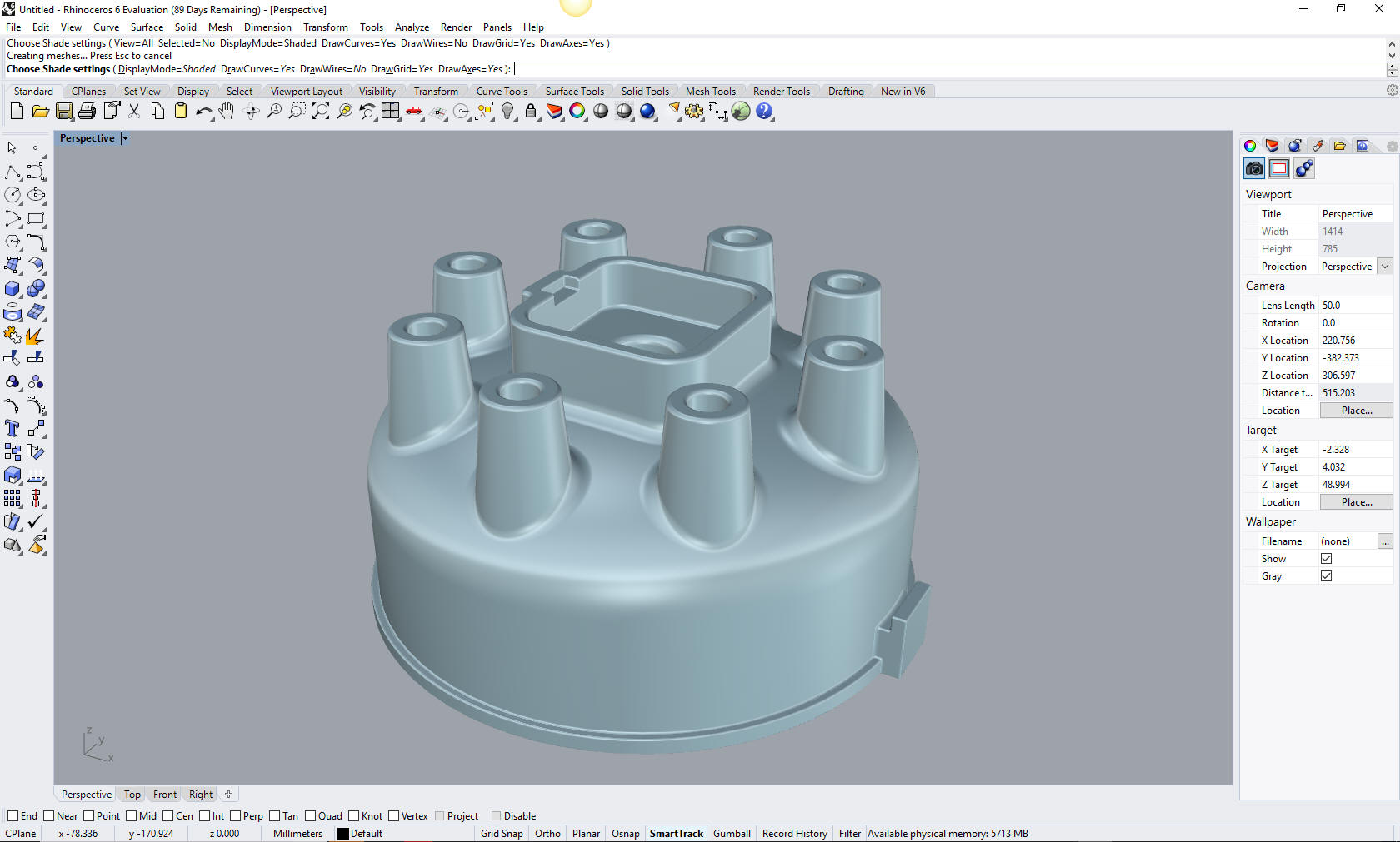
As I look through my Rhino Version 1.0 User guide there is little difference in the user interface. I suppose that is why it has been a staple in the PC 3D CAD world for over 25 years.
It seems you can only have one file opened at a time. This seems a bit archaic since most programs can have multi-files open as you can see in ZW3D.
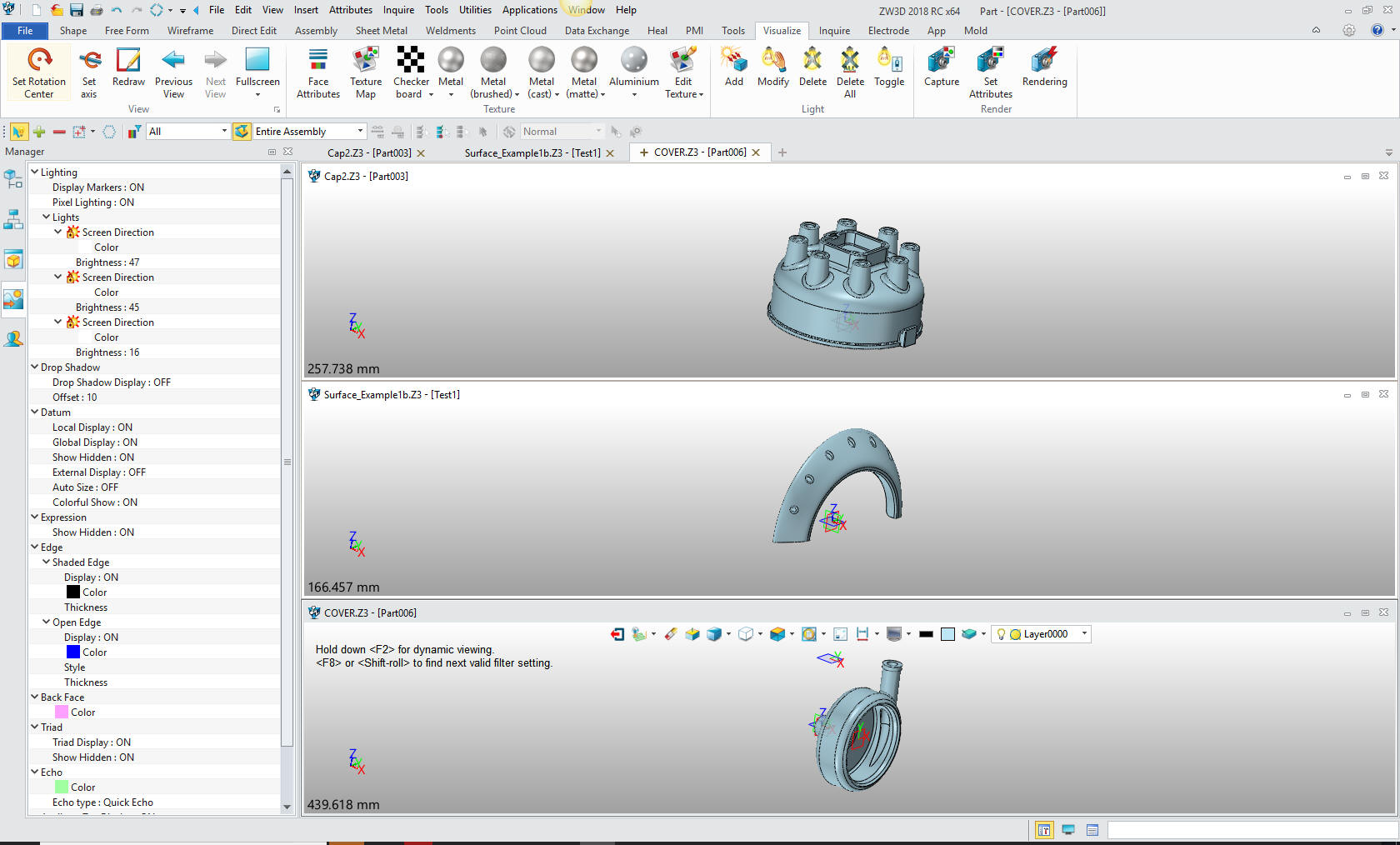
I also found that Rhino only imports IGES and STEP plus a bunch of graphic or obscure formats. I does import native Solidworks parts and assemblies as shown below
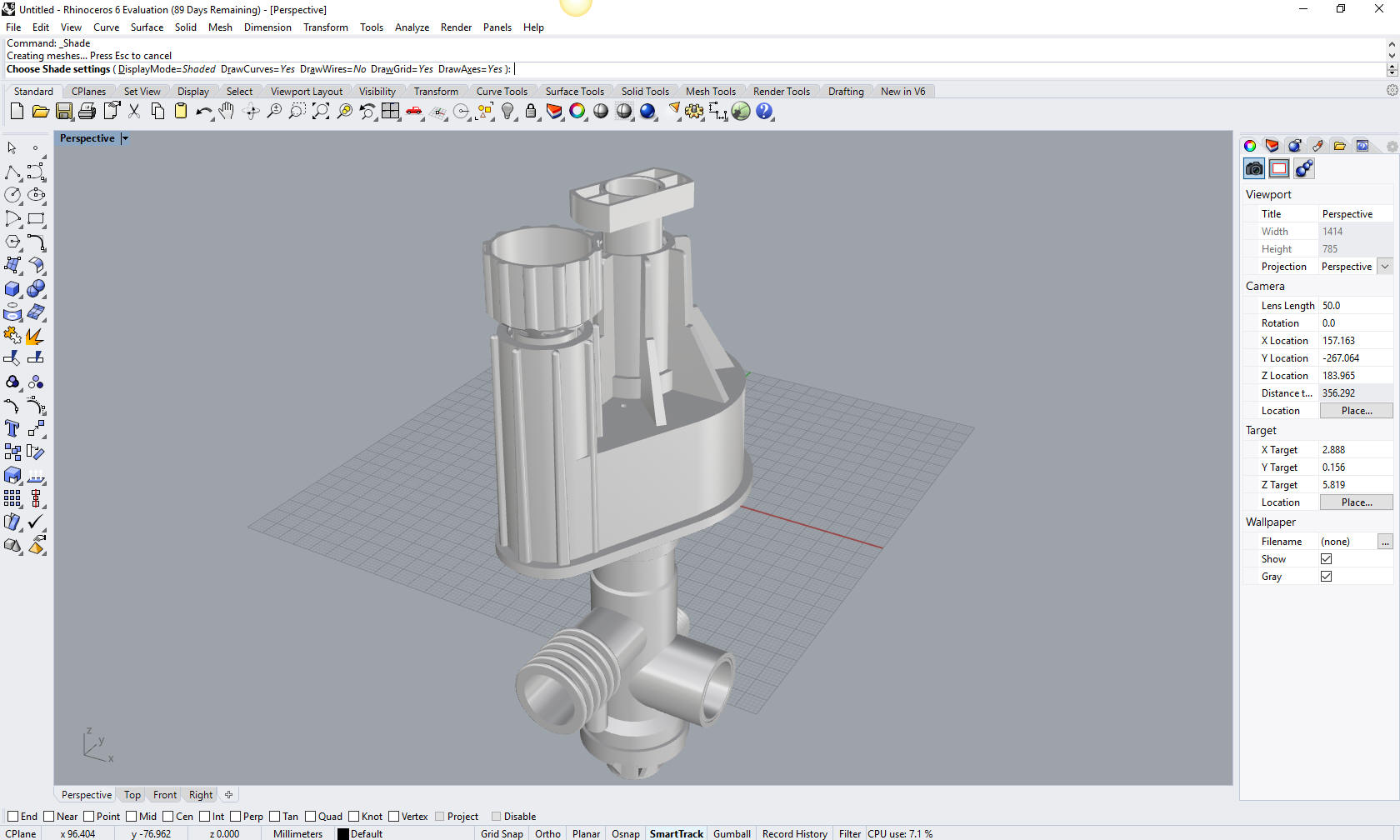
Here is the same Solidworks file in ZW3D notice that the parts and sub-assemblies are labeled, separate and in the same file. This one of the benefits of both Rhino and ZW3D, they both are single model environments. It also comes in with the original colors.
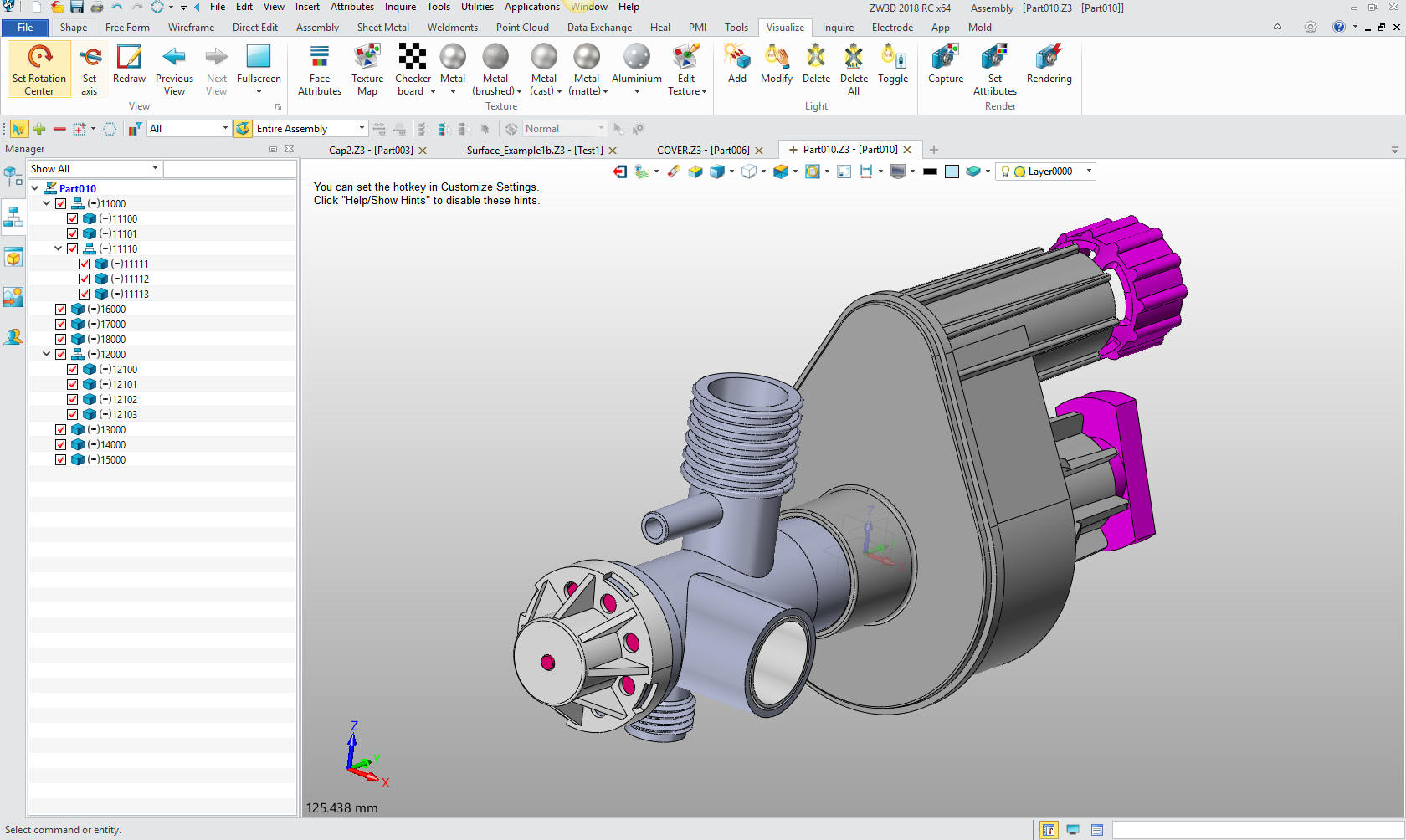
That was the selling point for 3D CAD in the beginning. The product was a paper print.
The 1980's - 3D CAD - The Beginning
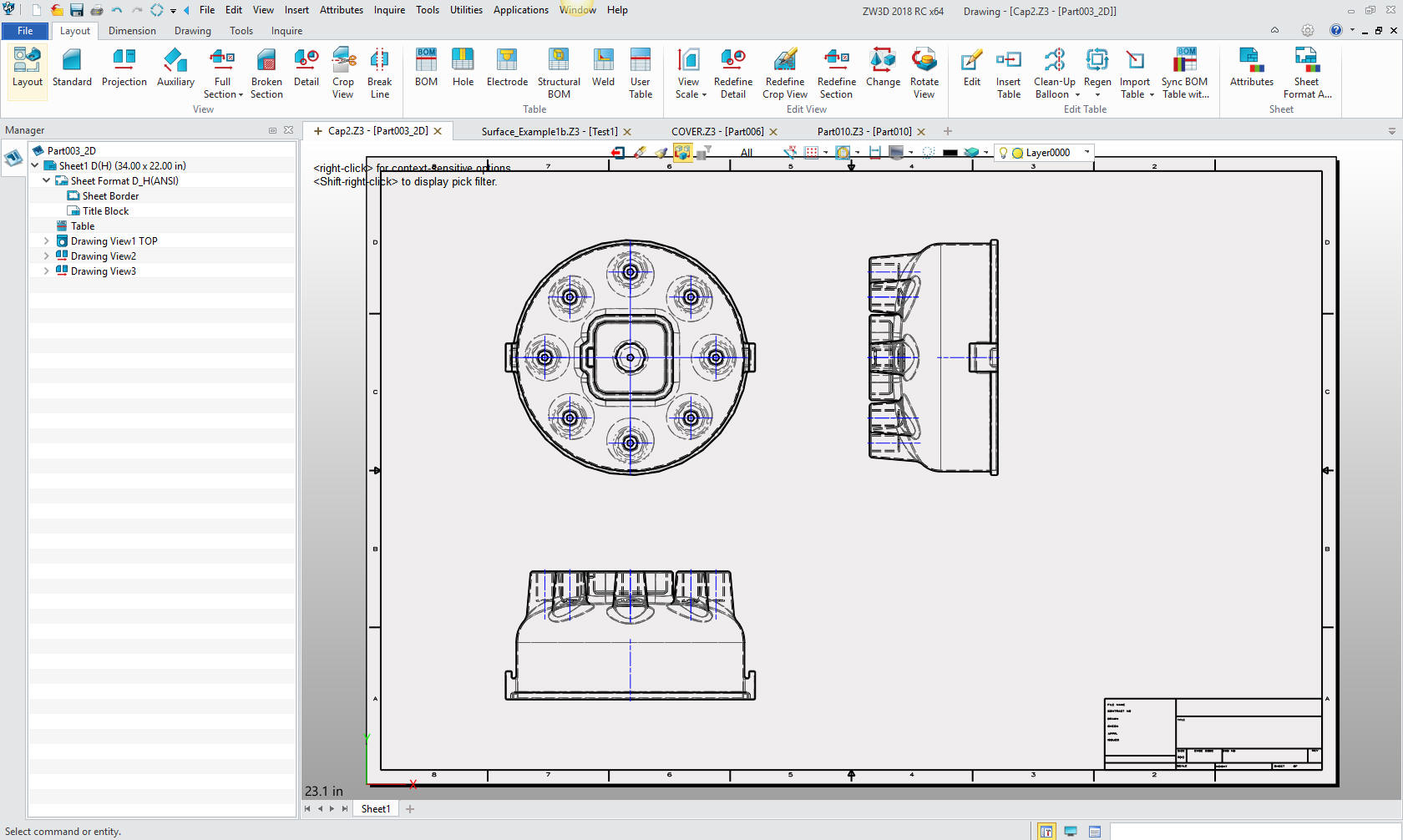
First it imports NX, Solidworks, Solid Edge, Creo (Pro/e) and Inventor native files.
It imports and exports Catia 4/5 and all of the standard formats.
It also imports PMI for NX, Solidworks, Creo and Catia!
I am not here to replace Rhino but to praise
it..
hmm, where have I heard that before??
So, I thought I would put together a special
offer for the Rhino users only.
ZW3D Lite
This is a great enhancement for the Rhino users. I am sure many have worked with Solidworks, Inventor or other Pro/e (Creo) clones. ZW3D Lite is very similar and can use your surface and solids from basically any system. It is a sketch-based system with primitive shapes and robust direct edit functionality. But it has two features that make it miles more productive than the Pro/e clones:
-
Multi-Object Environment: All parts and sub-assemblies in one file
-
The Integrated Drawing: Yes, the part and assembly drawings are in one file
The price of ZW3D Lite perpetual is very attractive at $2,000.00 plus very flexible rental options starting at a 6 month rental of $375.00
You can do much of your work and export it to
ZW3D Lite to complete your engineering documentation.
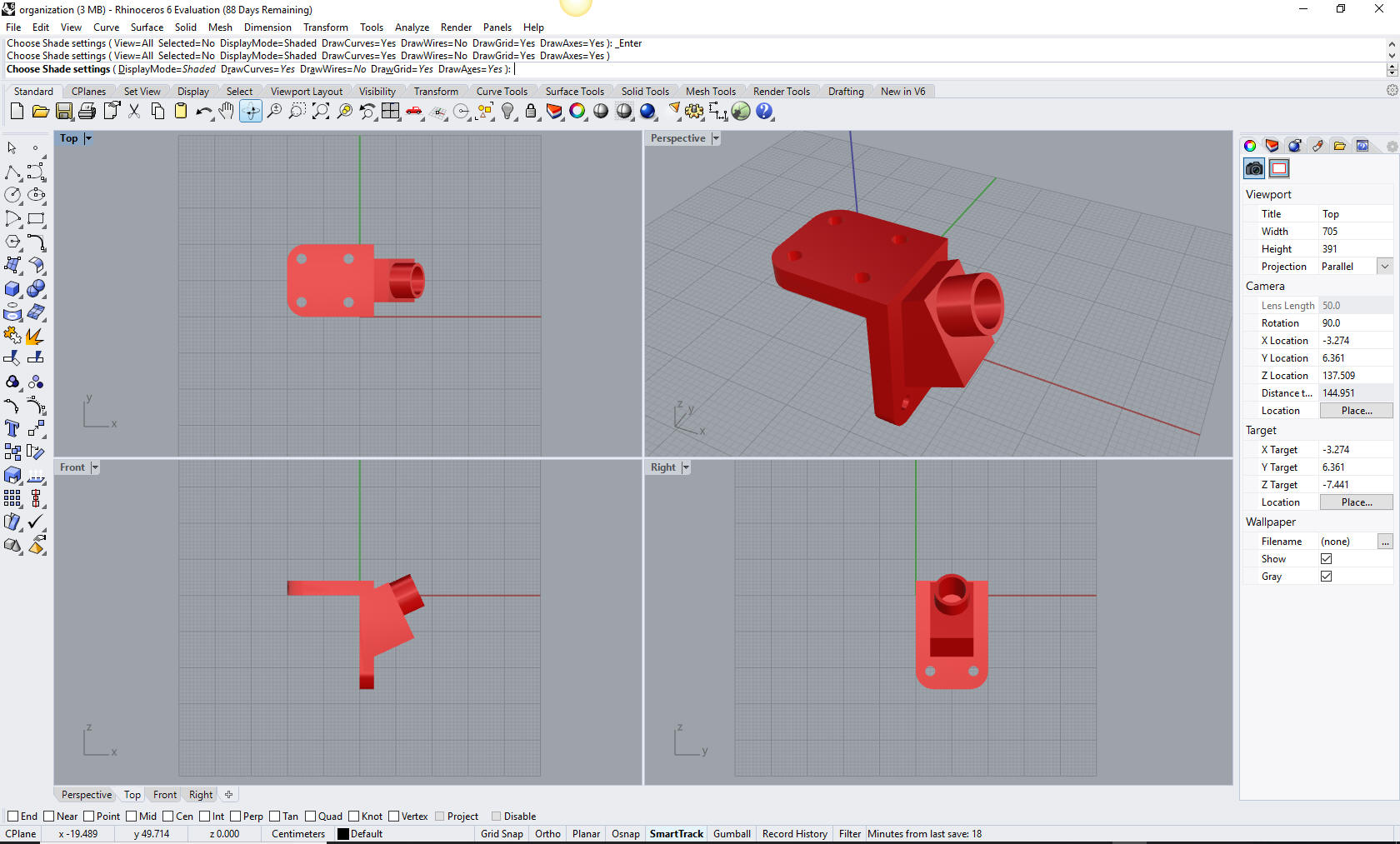
Here is the imported IGES file. I have added some dimensions to show you can modify the part.
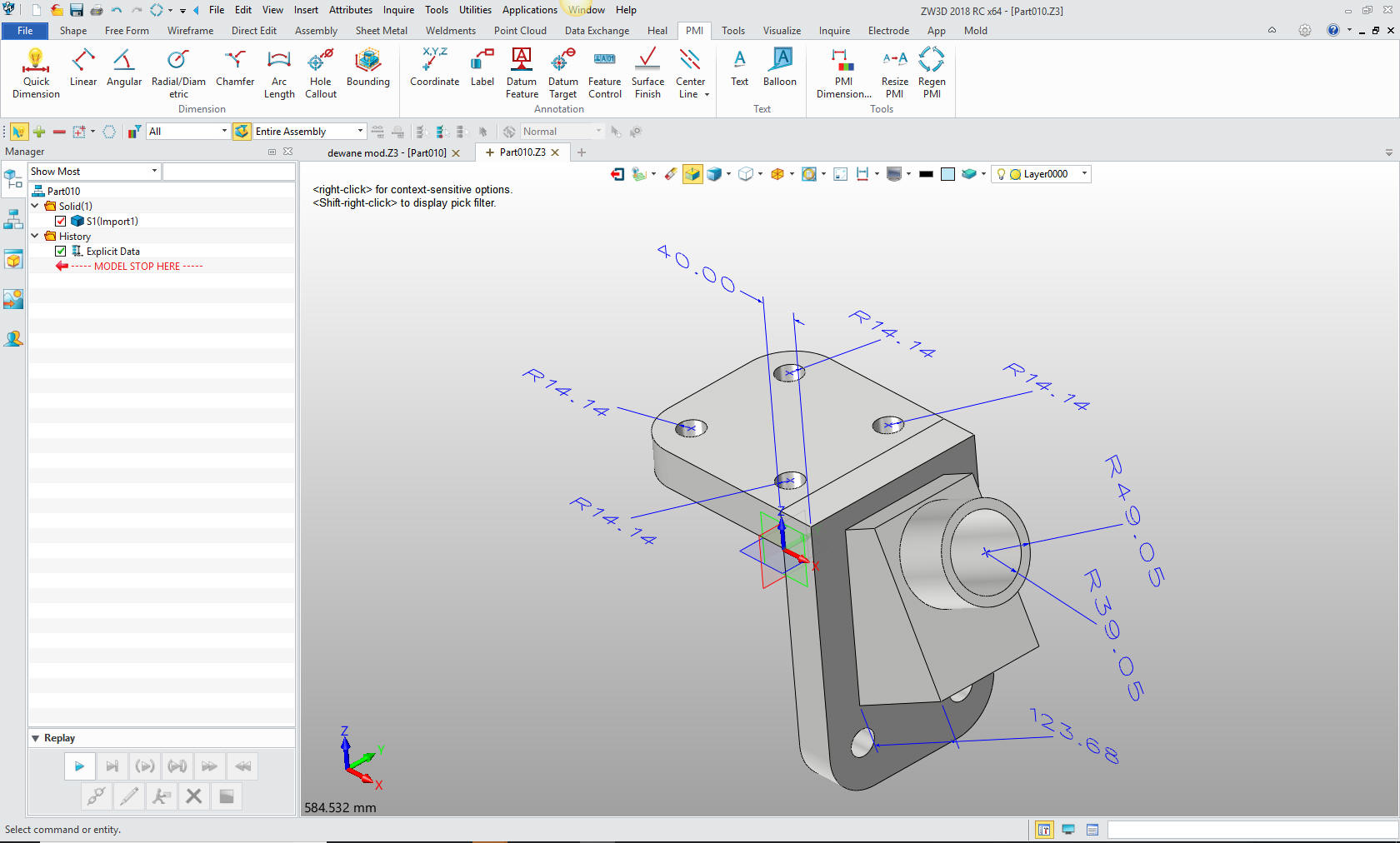
I have modified a few of the faces. I hope other mechanical parts are designed better than this. Even though I could modify the part it was far from what I am used to working with from virtually every other solid modeling system. I consider this part unusable. I am not sure how he create the outside fillets but they are not recognizable.
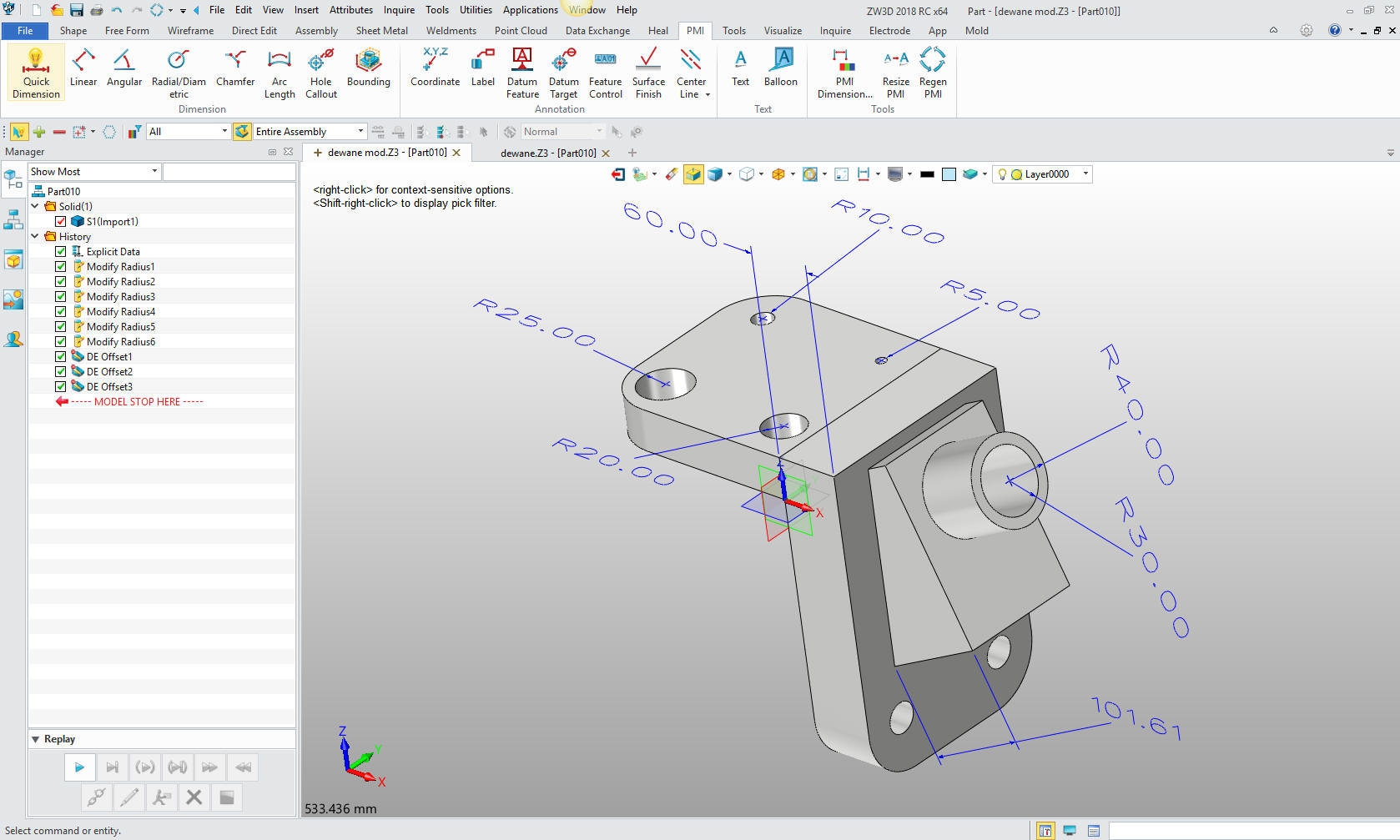
ZW3D Standard
Standard adds Class A surfacing, Sheet Metal
Design, Precision and free form morphing, Reverse engineering plus other
features to ZW3D Lite.
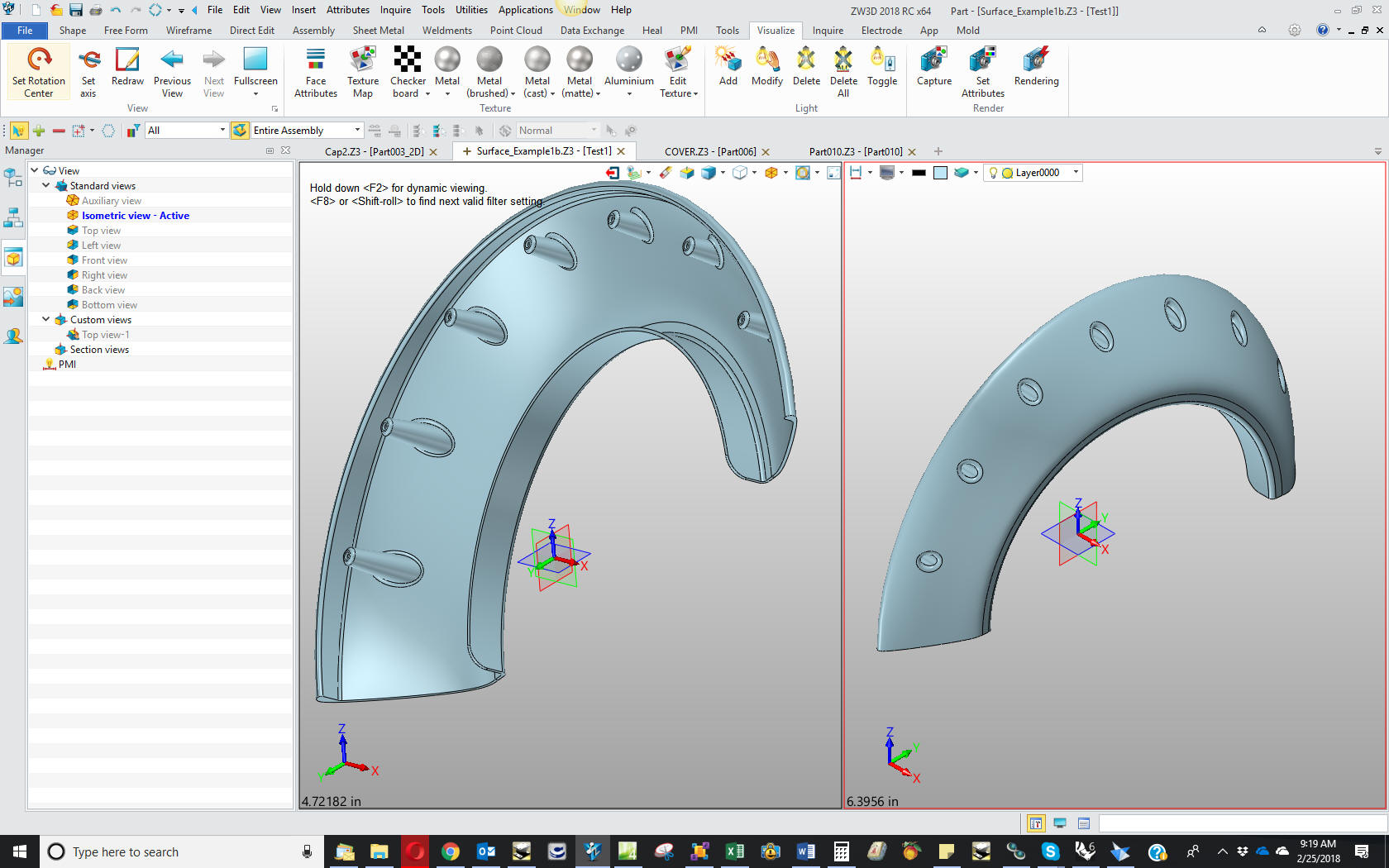
It easily moves as an IGES to Rhino
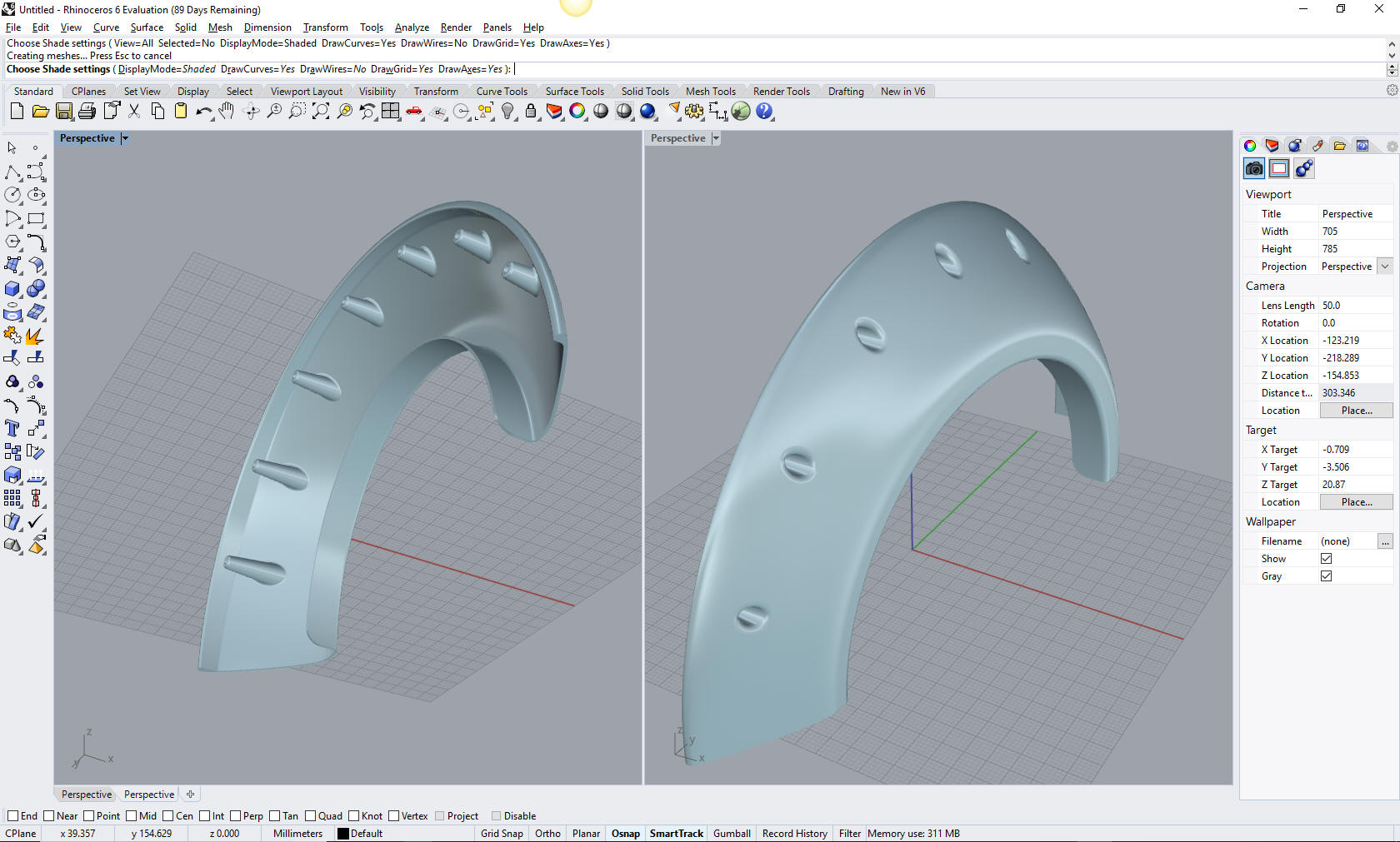
I don’t have to tell you, Rhino users about
surfacing. ZW3D could replace Rhino, for some, but most of you have
decades of experience and would probably not move but would love to have
more model functionality without losing continuity.
ZW3D Standard works incredibly well with IGES files and
all the solid modeling translation formats including importing all the
major 3D CAD program native files.
I feel ZW3D Standard is the best fit for Rhino and all surfacing packages no matter what the cost.
Here is what a previous Rhino user said about the move to ZW3D Standard
Peter
The initial hull design was done in Rhino, which for some reason
is a standard in the boat industry.
The surface already had
a few problems!
It was imported into Fusion 360 and I did
some of the early concept design work, but when it came to surfacing
I hit road blocks every way I tried it.
At this time Phil
was not part of the project, but I suggested to my client that we
needed Phil's help. Phil also hit road blocks in Fusion 360 even
using some of his unique re-topologizing workflows and T-Splines.
The rest is history, as they say.
Thanks to ZW3D
paired with Phil’s surfacing skills we now have tooling for the hull
created.
You should see the images.
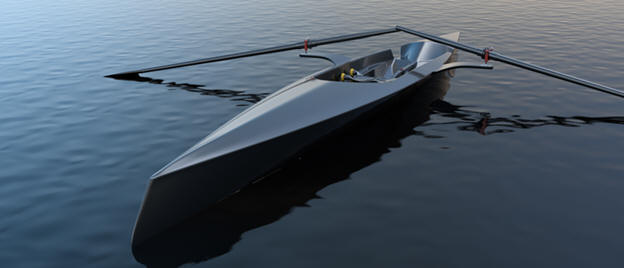
Perfectly smooth
reflections!
Peter
Download it today and experience the incredible
hybrid modeling capabilities.
For more information or to download ZW3D
The Most Incredible Presentation of Hybrid CAD Modeling, Ever!!
Beyond
Direct Edit: Surface and Hybrid Modeling
The Case for
Inexpensive 3D CAD!
But ZW3D offer much more. It is one of the few
truly integrate CAD/CAM programs. It offers integrated mold and CNC
options.
The Case for
Inexpensive Integrated 3D CAD/CAM!
Now for the special!
Click here to go to the special offer for Rhino
users only
WWW.TECNETINC.COM
Please feel free to stop by our website below for a variety of articles on the State of our Industry, Interesting Articles on 3D CAD Productivity and a Few of Our Projects!

Viewpoints on Today's 3D CAD and Engineering Industry
We sell and support IronCAD and ZW3D Products and provide engineering services throughout the USA and Canada!
TECH-NET Engineering Services!
